|
Copyright © 2012-2020: Flying For Home & Red Zephyr Studios. All Rights Reserved. Privacy Statement | Staff & Credits | Terms Of Service Use of this site signifies your understanding of and agreement to the Terms of Service. |
First Strides
Horse Care
Condition & Energy
Maturity
Longevity & Soundness
Feeding
Exercising
Training Guide
Buddy Workouts
➤Injuries
Gelding
Buddies
Retiring & Pensioning
Buying & Selling
Pasture
Stats & Traits
Racing
Series Races
Color Shows
Breeding
Genetics
Change Log
Item Database
Horse Care
Condition & Energy
Maturity
Longevity & Soundness
Feeding
Exercising
Training Guide
Buddy Workouts
➤Injuries
Gelding
Buddies
Retiring & Pensioning
Buying & Selling
Pasture
Stats & Traits
Racing
Series Races
Color Shows
Breeding
Genetics
Change Log
Item Database
Injuries
| Injury Causes | ||
|---|---|---|
| Horses on FFH can sustain injuries from racing - just like in real life! Injuries don't just happen randomly; there is always a contributing factor. If you take care to avoid the largest contributors toward injuries, you will greatly reduce how often your horses are injured and will avoid catastrophic injuries almost entirely. | ||
| Risk | ||
|
Risk is an important factor in determining how hardy your horse is. Horses with high Risk are much more likely to be accident prone and will likely suffer frequent injuries. Any level of Risk may contribute toward minor injuries, however horses with high Risk are much more likely to suffer major injuries. A horse's starting Risk is determined at birth based loosely upon Conformation genes. Horses with Fair or Poor Conformation are more likely to have higher Risk - but not always. A horse's Risk can (and likely will) fluctuate throughout their life. Risk may increase for a number of reasons, including: • feeding Hype or Bloom • entering a 3yo in 9+ furlong or 600+ yd races • training and/or racing horses with low Maturity • suffering a major injury • scoring significantly lower than a Buddy in a workout • Buddy Working with low Condition Horses with higher levels of Risk may suffer consequences at monthly rollover - Horses with high Risk may have a slightly harder time maintaining Condition. Horses with extremely high Risk (90%+) may lose Soundness. | ||
| Assessing Risk | ||
| Horses will receive a race note if they have Risk above 40%, and a different race note if Risk is over 80%. Risk over 40% can contribute to more severe injuries. It is up to each player to decide how much Risk they are comfortable racing a horse with; using certain items or balancing factors can help horses race safely even with Risk greater than 0%. You should monitor your horses' Risk before they start racing, and throughout their race career. If you have a Forever Pro account, you will be able to see each horse's Risk trait on their page. If you do not have Forever Pro, fear not! You can get an accurate estimation of what level of Risk a horse has by looking for the race notes pertaining to Risk or checking the indicator next to Risk in the Race Check Pop-up (found on horse’s page next to the name of the race they’re entered in). The following can also be contributing factors towards minor or major injuries: | ||
| Misentry | Perhaps the #1 cause of injury is incorrectly entering horses. You should always pay close attention to what distances and what surface a horse is trained for and only enter races that match the distance and surface a horse is trained on. A horse with at least 75% (green) training for the entered distance and surface will receive no contribution to injury chances from distance and surface. However, if a horse is yellow on the distance and/or surface of the race, it will contribute an insignificant chance of injury and is still thus perfectly acceptable. |
|
| Energy | Entering a horse with lower Energy is another common cause of injuries. To avoid adding to the chance of injury, horses should only be entered when they have 70% Energy or more at the time the race runs. This means you should take care not to do extra training (or certain feeding) after entering a horse in a race. You should also never enter a horse in multiple races unless you are willing to risk an injury or have given said horse an item such as Sugar Cubes. | |
| Condition | Condition is another leading cause of injuries. Your horse does not need to be at 100% Condition to race, but they do need to be at least 50% to be reasonably safe. | |
| Soundness | Declining Soundness means a horse's body is no longer as strong and stable as it once was. This means they are more susceptible to injury. While it's common to enter horses with slightly low Soundness, the further Soundness declines the more likely a horse is to suffer injury. Extremely low Soundness is a major cause of catastrophic injuries. Many consider 80% the minimum Soundness which is acceptable to race at, but if you’re planning on using the horse in question as a buddy or as breeding stock you may not wish to allow it to decline that much. Soundness lower than 100% also begins to affect their PR in races. |
|
| Maturity | Low Maturity contributes in two ways towards injuries. First, any horse with low Maturity (lower than 60%) has a higher chance to be injured in races. Second, entering a horse with anything under 60% Maturity will cause them to gain Risk. Training a horse with less than 40% Maturity (for training other than Track/Trail rides, assuming the horse has been saddle broke) or less than 25% (any training other than Groundwork) will also increase risk. | |
| Mud | Muddy tracks can be dangerous and may lead to injury. A horse's bias toward Mud determines how much they are impacted by this. 'Low' Mud rating means a horse will not only perform worse but be at a higher risk of injury when racing on wet tracks. 'High' Mud, on the other hand, can race on wet tracks with little to no additional risk. | |
| Caring for Injuries | ||
|
There are two ways to discover if your horse has been injured. Your horse will have an icon beside their name in your barn, and your Race Results page will indicate a Race Note with “Returned Sore” or “Pulled Up”, along with an icon. | ||
| Veterinary Exam | ||
| The first thing you need to do with an injured horse is visit the Veterinarian, where you can have an injury evaluation done for your horse. The cost of this exam will vary depending upon injury severity, ranging from a few thousand dollars to several hundred thousand. (The expense is reduced for lower rank members to assist when learning how to race their horses.) Rather than charging your account directly, the cost of all veterinary services will be added to your vet bill. This will ensure that you can get your horses examined and treated right away, even if they require an expensive surgery. Rather than worrying about your bank falling into the negative or having to wait to examine or treat an injured horse, you can pay your vet bill whenever it's convenient for you. To pay your vet bill, go the Veterinarian page under the Services tab. There will be a Vet Bills section, which will display the current amount you owe. Keep in mind that a 5% interest will be added to the bill at the end of each month if you have not paid your bill. If your bill reaches $250,000, you will be unable to purchase horses from the Horse Trader. If your bill reaches $1,000,000, you will be unable to use any further veterinary services. |
||
| Injury Severity | ||
|
The Veterinarian will state the type of injury, prognosis, and severity of the injury; this information will also be available under Exercise on the horse’s Care page whilst they undergo Rehabilitation. Severity is especially important to pay attention to because this will change as the horse recovers - which works hand in hand with rehabilitation time. There are two severity classifications for injuries: minor or major. Minor injuries are the most common types of injuries; most minor injuries will have a severity under 20-30% and may only require one or two sessions of rehabilitation before the horse can resume normal exercise and racing. Superficial injuries (lacerations, bruises, dehydration) will often only require a little first aid before the horse can get back to regular training. They may heal immediately upon being treated by a vet and often only require one or two sessions of rehabilitation. It is rare for horses with a minor injury to require stall rest. Major injuries are much more severe; most common major injuries will be under 70%. Very high severity injuries (into the 90% range) are quite rare. Major injuries will almost always require a period of stall rest followed by another period of rehabilitation. Some major injuries will require surgery. This will happen immediately upon veterinary examination and can be expensive. If this happens, it will be noted in the message you see when your horse is examined by the vet. In rare cases, major injuries may be severe enough that a horse must be retired or, even more rarely, euthanized. . Severe injuries that don't require retirement can sometimes allow an early retirement option if the severity is high enough. Major injuries have a permanent negative effect on a horse's PR, while even minor injuries will cause a lower PR in the race where they sustained the injury. |
||
| Rehabilitation | ||
|
Whenever a horse is currently injured they may not participate in normal training or enter races. Instead, a different set of exercise options will show up on their Exercise page, including information about their current injury. This will state the type of injury, prognosis, and severity. The severity of your injury will determine what types of rehabilitation exercises your horse can perform. Horses who are just coming out of surgery or have an otherwise major injury may require Stall Rest for several months. Horses on Stall Rest cannot be trained. After the period of Stall Rest is complete, they may begin very gentle exercises such as physiotherapy (stretches and light work) or hydrotherapy. The first available rehabilitation option in the drop down is the one which the horse will benefit the most from, so it is generally the recommended exercise. Horses who are on the road to recovery may begin hand walking or using a hot walker. Finally, horses who are just about ready to hit the track again can do reconditioning workouts, similar to Long Gallops, to start getting back into racing shape. Unlike regular Exercise options, you can only do one Rehabilitation session per month regardless of your horse's Energy. However, you can still complete a Rehabilitation session even if the horse has already performed other training in that month. For example, if a horse that trains and races in April A is injured, they can still do rehab in April B. | ||
| Injury Prevention and Care | ||
| The best way to prevent injury is to maintain good training and racing practices within your barns. This means doing everything you can to mitigate the chances of being injured as outlined above. However, if you make a mistake and increase a horse's Risk or simply have a horse that needs a little "bubble wrap", there are a number of things you can do to further decrease your chance of injuries. | ||
| Long Gallops | Exercising your horse with a Long Gallop can reduce Risk and increase Soundness. Keep in mind that Long Gallops take a large amount of Energy, must be done as the first training of the month, and may increase Risk on horses with low Maturity. | |
Basic Wraps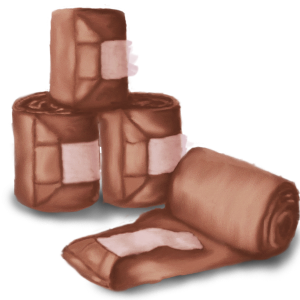 |
If there is only one thing you take away from this page, let it be this. Always keep wraps on all of your racing horses. Basic Wraps can be purchased for a nominal fee in the Tack Shop. They can also be obtained for free through various seasonal events. Basic Wraps will reduce your horse's chance of injury by 50%, meaning if you have them on every horse you will see approximately 50% fewer injuries. They also have a chance to reduce Risk if a horse wears them while exercising. | |
Ultra Wraps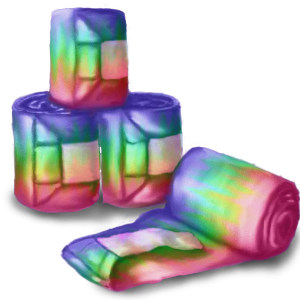 |
Ultra Wraps are a step up from Basic Wraps. They can also be purchased from the Tack Shop - though they cost more (PC), they have infinite uses and improved benefits. They can also be obtained through various seasonal events. First, Ultra Wraps will reduce chances of injury by 80%. Second, they have a chance to reduce a horse's Risk each time they train while wearing Ultra Wraps. If you have a horse with high Risk, this is an excellent way to bring it down. | |
Defend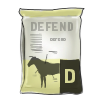 |
Defend is a standard type of feed available in the Feed Shop which is used to reduce Risk. A horse can be fed Defend any time their Risk is higher than 0%. Defend can take Energy when fed. | |
Mineral Blocks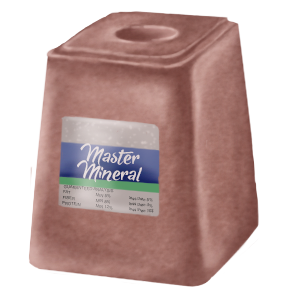 |
Mineral Blocks are a supplement available in Rumpled Packages from the Rusty Recycler. They will greatly reduce Risk instantly and also increase Longevity and Soundness. A horse can only have Mineral Blocks 3 times during their lifetime. | |
Golden Alfalfa Cubes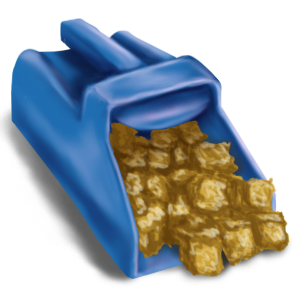 |
Golden Alfalfa Cubes are a rare supplement available from the Smelter. Useful for many reasons, when fed they immediately reduce Risk while also boosting Maturity, Energy, and Condition, all of which can contribute to injury. | |
Bundle of TLC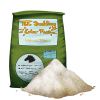 |
Bundle of TLC is an item you can craft in the workshop. By increasing a variety of "rested gains", it has many benefits that make it a great choice for horses struggling with injuries. Most importantly, Bundle of TLC will reduce Risk and increase Condition, which are two of the leading causes of injury. Gains from a Bundle of TLC are not instantaneous but happen at rollovers. | |
Grandma's Sampler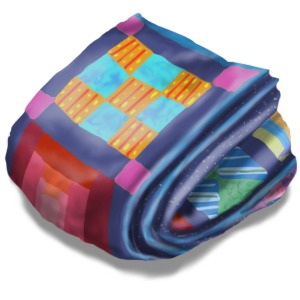 |
Grandma's Samplers have numerous uses. As far as injuries go, you can use them to reduce the severity and recovery time of an injury or you can use them to reduce Risk. Grandma's Samplers can be crafted in the Workshop with items that fall in January. As they are rarer than some of the above options, they're best reserved for cases where those items won't work or aren't available. | |
| Zenspired Jockey | Zenspired is one of the skills you can give your custom jockeys. While it only provides average benefits to racing performance, this skill may be sought after by people who have many horse with higher risk or who just want to reduce their overall number of injuries. Zenspired jockeys will decrease your horse's chance of being injured in races and may also decrease their Risk stat. | |
| Rehabilitation Facility | Once you have the 8th star in Business skills, you have the option to open up an equine therapy center or rehabilitation facility for your barn. This is a very expensive addition to your farm, but can save a lot of time and money in the long run. If you have these facilities, all rehabilitation training will work twice as well, meaning your horses will recover from injuries in half the normal time. This can save you from using Samplers and can also help get horses back on the track (earning money) faster. | |
| Ice Wraps | Ice Wraps are available in the Pro Shop, and these will gradually decrease Risk, Injury Severity and also increase Soundness over a period of 4 months. | |